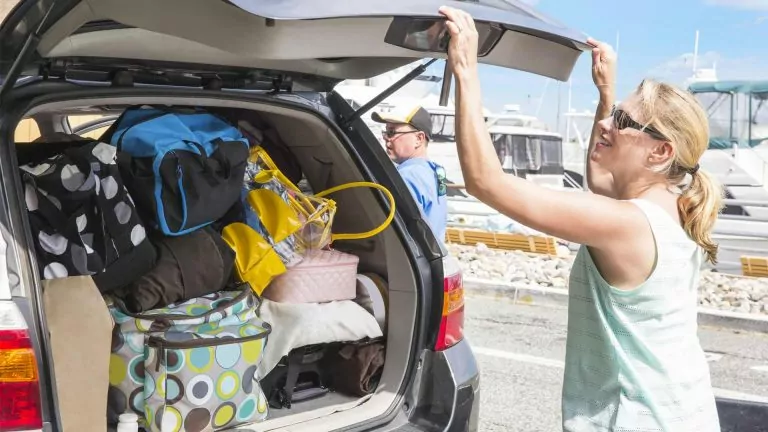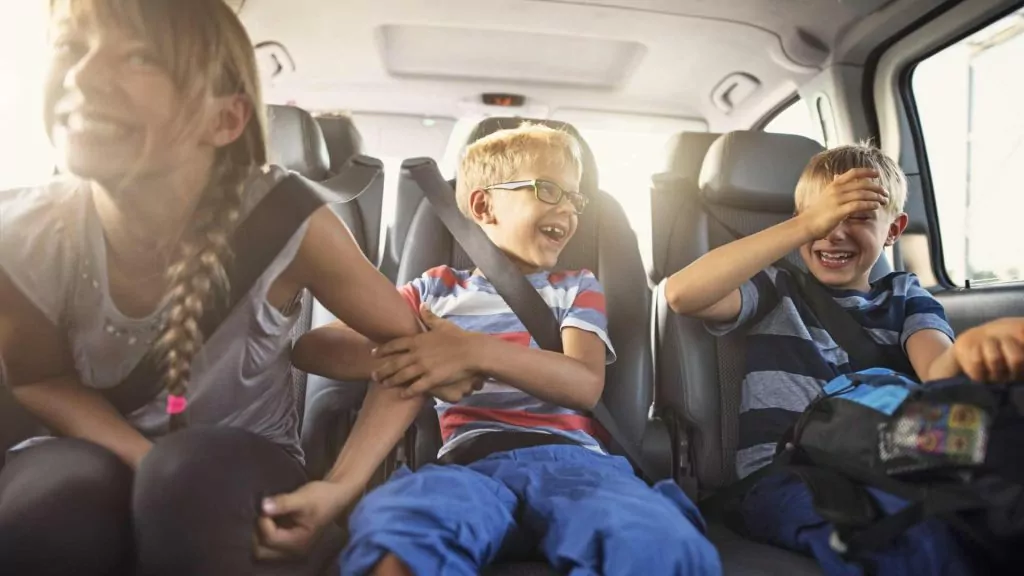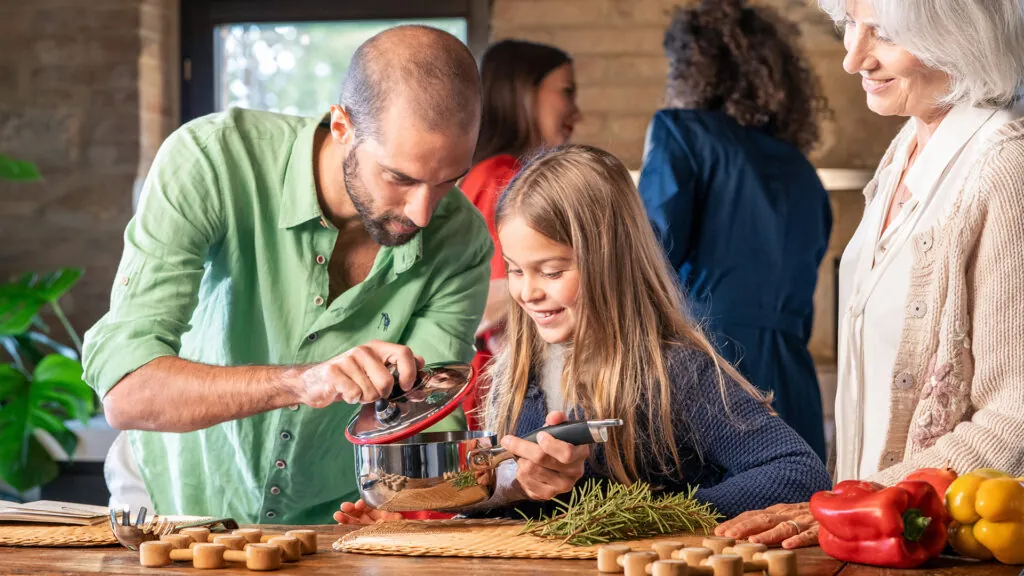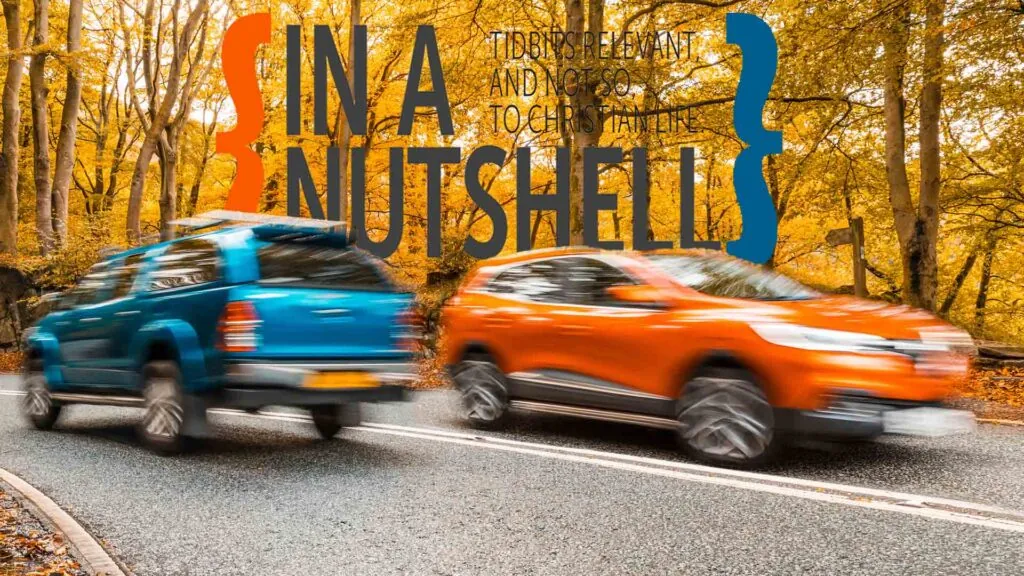The well-circulated belief that “moms are supposed to know where everything is at every given moment” was humorously illustrated for me two years ago when we attended our son’s out of state wedding. Another son, who was a groomsman, was lodging for two nights beforehand at a separate location from us and yet he still called me on the morning of the wedding to ask if I knew the whereabouts of his dress pants!
On a trip, a few organizational plans can keep Mom from going crazy from hearing constant requests for favorite t-shirts, swim suits or Sunday shoes. It’s also a good way for the rest of the family to learn responsibility. The following ideas will make the “suitcase living” a little easier.
1. Pack a “motel bag”: If there is a stopover on the way to your destination, pack a “motel bag” to significantly reduce the amount that gets carried in and out. Include a change of clothes and pajamas for each person, and toiletries.
2. Plan your vehicle-packing strategy: Take your empty suitcases out to the vehicle a day or two beforehand and determine the best way to fit them all inside. Some families find that plastic bins or pillow cases or trash bags fit better than suitcases. Remember to make the “motel bag” the easiest to reach. A rooftop luggage pod or trailer might ease the crowding of the “stuff” also.
3. Give your husband his own suitcase: He will be out of his usual element too, and having his own space will make it easier for him to find his razor without having to dig through the baby’s onesies or your extra shoes. The goal is for no one to have to ask Mom questions. (You won’t ever reach it, but you’ll get closer.)
4. Number your suitcases: Use masking tape or adhesive labels to number them, for easier recognition and accountability. Even a four-year-old will be able to remember who uses which one. When Mom needs something out of a suitcase, she can easily direct someone to #5 instead of “the small blue one…no, no, the small blue one.”
5. Give everyone 3 and up a list of what to pack and let them pack it… but be sure to inspect: Determine the general list: five shirts, two hoodies, 2 pairs of jeans, 6 pairs of underwear, etc. Our 12 year old daughter Julie gladly made a pictorial list for her 3-year-old sister; Amy was thrilled to be able to pack her own suitcase and confidently mark off each item as she found it. Make photocopies of the lists to save for next time.
Of course, you must inspect, because there’s always one who still completely forgets his underwear or his toothbrush. But their work saves you a lot of steps, teaches them how to do it, and puts all their pre-trip excitement to good use! Actually it’s a good time to buy new toothbrushes for everyone; that way you can pack them up and not have to wait until morning to finish packing all the suitcases – they can use their old one before they leave in the morning.
6. Write it down, don’t try to remember it all: While packing, if you are missing an item or two or three from someone’s case, write it down and tape it to the suitcase so that you don’t have to try to keep all those details inside your brain. And when you go to bed, put a pad of paper and a pen on the floor or nightstand next to you so that when you think of something that wasn’t packed you can write it down instead of jumping up to go and retrieve it “before you forget.”
7. Use ziplock bags for daily sets of clothing: When the kids are young, place a shirt, shorts, socks, and underwear in a gallon size ziplock bag and write “Amy – Monday” on it, etc. This is especially helpful for Sunday clothes which might be kept in a separate suitcase. Dad can just hand out the packets and everyone can dress.
8. All packed: Once a suitcase is declared “All packed,” close it up and stand it in line in a designated place, and make a rule that no one except you is allowed to open it again. They are numbered, so everyone will know when they are all there. I always like to pack them all into the car the night before, and let the children place their bookbags in the first seat they will sit in. We lay out the clothes for the next day. Some families who are leaving in the middle of the night just have everyone sleep in their travel clothes. In the morning, we just use our old toothbrushes and share a comb or two, pack up the food and water and hit the road.
9. Packing to head home: To pack for driving home, you may need your “motel bag” as before. You should also appoint a suitcase or two to be only for “dirty clothes” and combine the clean clothes into other suitcases, taking note of the numbers on them. Now #1 and #2 can be left in the laundry room, #4 taken to the girls’ room, and so forth.
This article first appeared in the February 2010 issue.












